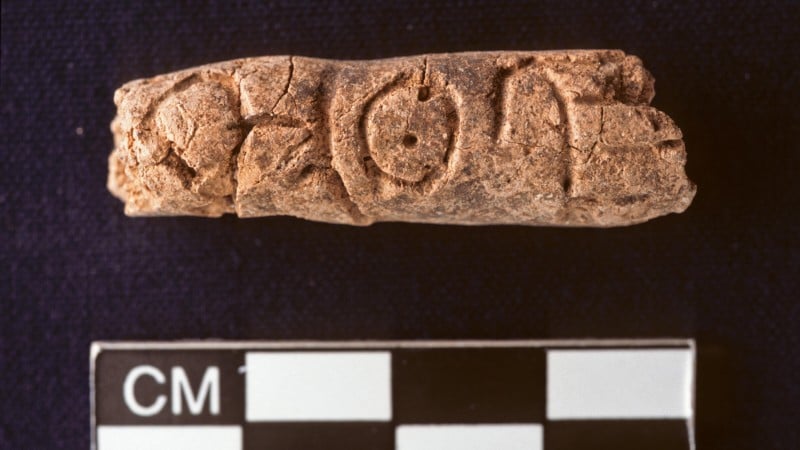In a stunning archaeological find, researchers from Johns Hopkins University have unearthed what may be humanity’s oldest known alphabetic writing system, preserved on clay cylinders in an ancient Syrian tomb. This discovery, dating to approximately 2400 BCE, challenges our fundamental understanding of how written communication evolved and spread across early civilizations.
Published in American Society of Overseas Research Proceedings | Estimated reading time: 4 minutes
Deep within the archaeological site of Tell Umm-el Marra in western Syria, a team led by Professor Glenn Schwartz uncovered four finger-length clay cylinders bearing mysterious inscriptions. These artifacts, found alongside gold and silver jewelry in a well-preserved tomb, predate previously known alphabetic writing systems by half a millennium. The discovery suggests that the democratization of written communication began far earlier than scholars had imagined, and in an unexpected geographical location.
“The cylinders were perforated, suggesting they may have been attached to other objects as labels,” explains Schwartz, whose team employed carbon-14 dating to confirm the artifacts’ age. The precise meaning of these ancient messages remains tantalizingly elusive, but their very existence challenges the long-held belief that alphabet systems originated in Egypt around 1900 BCE.
The tomb itself offers intriguing context for these revolutionary artifacts. Housing six skeletons and an array of valuable goods including cookware, weapons, and intact pottery vessels, it represents a snapshot of Early Bronze Age urban life. The presence of alphabetic writing in this setting suggests that even medium-sized urban centers in ancient Syria were experimenting with sophisticated communication systems.
This discovery carries profound implications for our understanding of early urban societies. Alphabetic writing represented a crucial democratizing force in human history, extending the power of written communication beyond royal courts and elite circles. The fact that such systems were being developed centuries earlier than previously known suggests we may need to reevaluate the timeline of social and technological advancement in ancient civilizations.
Glossary
- Carbon-14 dating
- A scientific method used to determine the age of organic materials by measuring the decay of radioactive carbon isotopes.
- Early Bronze Age
- A historical period (approximately 3300-2100 BCE) characterized by the widespread use of bronze tools and the emergence of urban centers.
- Alphabetic writing
- A writing system where each symbol represents a basic speech sound, making written communication more accessible than complex pictographic systems.
How much earlier is this discovery than previously known alphabetic writing?
The clay cylinders predate other known alphabetic scripts by approximately 500 years.
Where did scholars previously believe alphabetic writing originated?
Scholars previously thought the alphabet was invented in or around Egypt around 1900 BCE.
What physical feature of the clay cylinders suggests their practical use?
The cylinders were perforated, suggesting they were meant to be attached to other objects, possibly as labels.
What other artifacts were found in the tomb alongside the clay cylinders?
The tomb contained six skeletons, gold and silver jewelry, cookware, a spearhead, and intact pottery vessels.
Enjoy this story? Subscribe to our newsletter at scienceblog.substack.com.
If our reporting has informed or inspired you, please consider making a donation. Every contribution, no matter the size, empowers us to continue delivering accurate, engaging, and trustworthy science and medical news. Independent journalism requires time, effort, and resources—your support ensures we can keep uncovering the stories that matter most to you.
Join us in making knowledge accessible and impactful. Thank you for standing with us!

